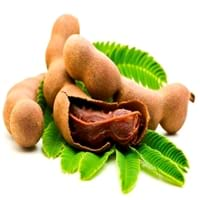Health Benefits
Boosts immune system, Boosts respiratory health, Cancer prevention, Digestive aid, Piles treatment
Acidity treatment, Acts as natural antibiotic, Anti-oxidant properties, Aphonia treatment
General Benefits
Beneficial in improving nerve function, Protects against parasites and worms, Relieves pain
Anti-inflammatory properties, Body hydration, Boosts immune system, Controls blood sugar levels, Digestive aid, Fights against infections, Flu treatment, Healing of wounds, Helps in weight loss, Maintains healthy cholesterol level
Skin Benefits
Anti-aging benefits, Brightens and lightens complexion, Exfoliates skin, Hydrates skin, Treatment of dark spots
Anti-aging benefits, Heals sunburn, Hydrates skin, Reduces wrinkles, Skin rejuvenation, Skin revitalization, Treatment of skin diseases
Hair Benefits
Prevents hair loss
Promotes longer and healthier hair, Regulates hair growth, Rejuvenates scalp, Shiny hair, Treatment of dandruff
Allergy Symptoms
Abdominal pains, Breathing difficulty, Dizziness, Eczema, Fainting, Hives, Itching, Nasal congestion, Swelling of face, Tingling sensation in mouth, Vomiting
Abdominal pains, Breathing difficulty, Itching in tongue and other parts of mouth, Nasal congestion, Nausea, Runny nose, Vomiting
Side Effects
Decrease in blood sugar levels, Induces acid reflux, Allergic reaction, Tooth decay, May form gallstones
Allergic reaction, Indigestion, Weight gain
Best Time to Eat
Along with meal, As a snack in the late afternoon, Don't consume at night and before bed, Strictly avoid empty stomach
Along with meal, Best if taken as a breakfast (or empty stomach), As a snack in the late afternoon, Morning time (before lunch)
Vitamin B5 (Pantothenic Acid)
Vitamin C (Ascorbic Acid)
Vitamin K (Phyllochinone)
Calories in Fresh Fruit with Peel
Not Available
Not Available
Calories in Fresh Fruit without Peel
Calories in Frozen Form
Not Available
Calories in Canned Form
Not Available
Type
Tropical
Tree fruit, Tropical
Season
Spring, Summer
All seasons
Varieties
PKM 1, Urigam, Hasanur, Tumkur prathisthan, DTS 1 and Yogeshwari
Tall Varieties- West Coast Tall, Laccadiv Micro, Andaman Ordinary, Fiji, Kappadam, San Ramon, Philippines, Spicate, and Pratap. Dwarf Varieties- Chowghat Orange Dwarf (COD) and Chowghat Green Dwarf (CGD)
Color
Brown, Reddish-brown
Brown, Green
Shape
Curving Cylinder
Round
Taste
Sour-Sweet
Juicy, Sweetish
Origin
Africa
America, India
Soil Type
Loam, Sandy, Sandy loam, Well-drained
Clay, Sand
Climatic Conditions
Humid to dry, Rainfall, Warm to hot climate
Hot, Humid
Facts about
- Tamarind is used to prevent body odor.
- African children use the tamarind seeds in games.
- No cases of tamarind toxicity or allergy reported till date.
- Burning coconut's husk helps repel mosquitoes.
- Surveys say that falling coconut kills hundreds every year.
- Coconut water is used as a substitute Blood Plasma & is called "father of modern tissue culture science".
Top Producer
India
Indonesia
Other Countries
Africa, Australia, Brazil, China, Mexico, Nigeria, Sudan, Taiwan
Brazil, India, Philippines, Sri Lanka
Top Importer
United States of America
United States of America
Top Exporter
Thailand
Philippines
Botanical Name
Tamarindus indica
Cocos nucifera
Synonym
Tamarindo, tamarindus
Not Available
Subkingdom
Tracheobionta
Tracheobionta
Division
Magnoliophyta
Magnoliophyta
Class
Liliopsida
Liliopsida
Subclass
Rosidae
Arecidae
Family
Fabaceae
Arecaceae
Species
Tamarindus indica
C. nucifera
Generic Group
Tamarind Sub
Arecaceae
Difference Between Tamarind and Coconut
We might think that Tamarind and Coconut are similar with respect to nutritional value and health benefits. But the nutrient content of both fruits is different. Tamarind and Coconut Facts such as their taste, shape, color, and size are also distinct. The difference between Tamarind and Coconut is explained here.
The amount of calories in 100 gm of fresh Tamarind and Coconut with peel is Not Available and Not Available and the amount of calories without peel is 239.00 kcal and 354.00 kcal respectively. Thus, Tamarind and Coconut belong to High Calorie Fruits and High Calorie Fruits category.These fruits might or might not differ with respect to their scientific classification. The order of Tamarind and Coconut is Fabales and Arecales respectively. Tamarind belongs to Fabaceae family and Coconut belongs to Arecaceae family. Tamarind belongs to Tamarindus genus of Tamarindus indica species and Coconut belongs to Cocos genus of C. nucifera species. Beings plants, both fruits belong to Plantae Kingdom.









